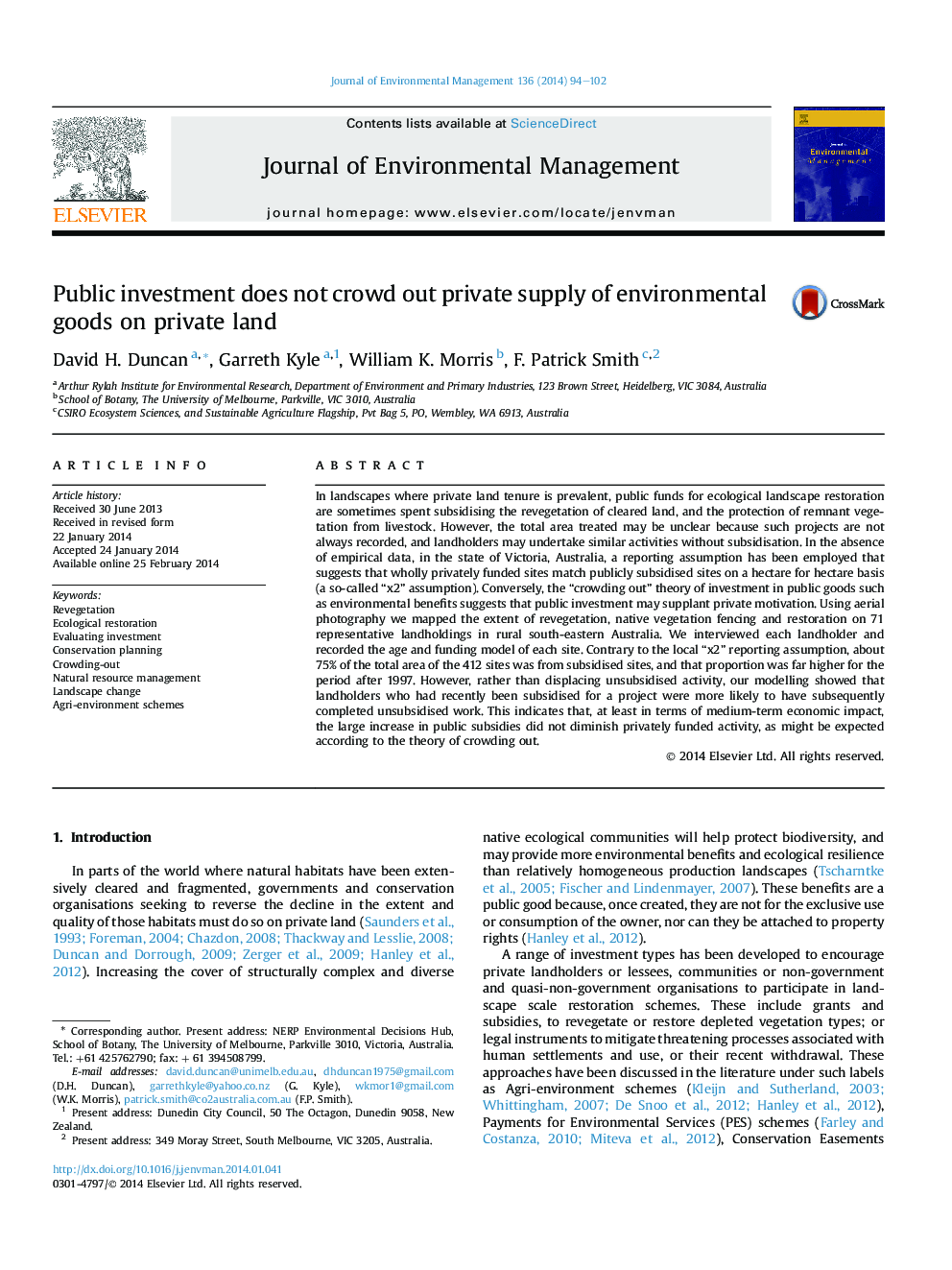| کد مقاله | کد نشریه | سال انتشار | مقاله انگلیسی | نسخه تمام متن |
|---|---|---|---|---|
| 1055712 | 1485276 | 2014 | 9 صفحه PDF | دانلود رایگان |
• We studied the amount and funding of native vegetation restoration on private land.
• Our data disagree with both a local reporting assumption, and established theory.
• The area of unsubsidised private works did not match the increased public works.
• A large increase in public investment did not appear to crowd-out private activity.
• Subsidised works more closely followed strategic conservation priorities.
In landscapes where private land tenure is prevalent, public funds for ecological landscape restoration are sometimes spent subsidising the revegetation of cleared land, and the protection of remnant vegetation from livestock. However, the total area treated may be unclear because such projects are not always recorded, and landholders may undertake similar activities without subsidisation. In the absence of empirical data, in the state of Victoria, Australia, a reporting assumption has been employed that suggests that wholly privately funded sites match publicly subsidised sites on a hectare for hectare basis (a so-called “x2” assumption). Conversely, the “crowding out” theory of investment in public goods such as environmental benefits suggests that public investment may supplant private motivation. Using aerial photography we mapped the extent of revegetation, native vegetation fencing and restoration on 71 representative landholdings in rural south-eastern Australia. We interviewed each landholder and recorded the age and funding model of each site. Contrary to the local “x2” reporting assumption, about 75% of the total area of the 412 sites was from subsidised sites, and that proportion was far higher for the period after 1997. However, rather than displacing unsubsidised activity, our modelling showed that landholders who had recently been subsidised for a project were more likely to have subsequently completed unsubsidised work. This indicates that, at least in terms of medium-term economic impact, the large increase in public subsidies did not diminish privately funded activity, as might be expected according to the theory of crowding out.
Journal: Journal of Environmental Management - Volume 136, 1 April 2014, Pages 94–102
